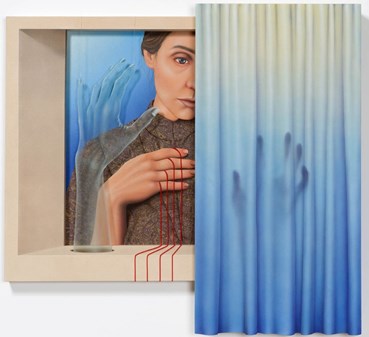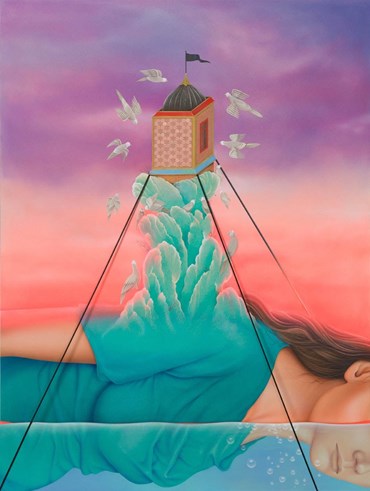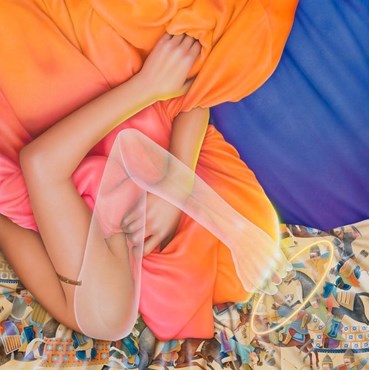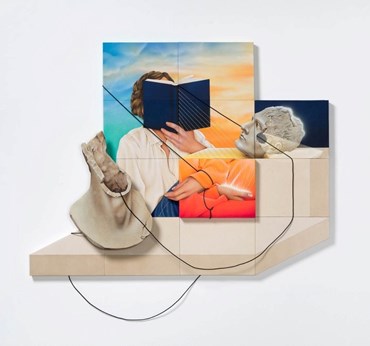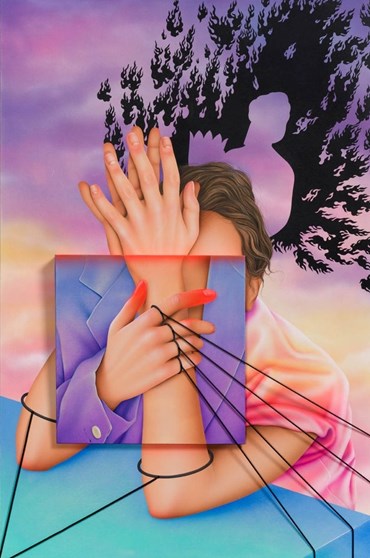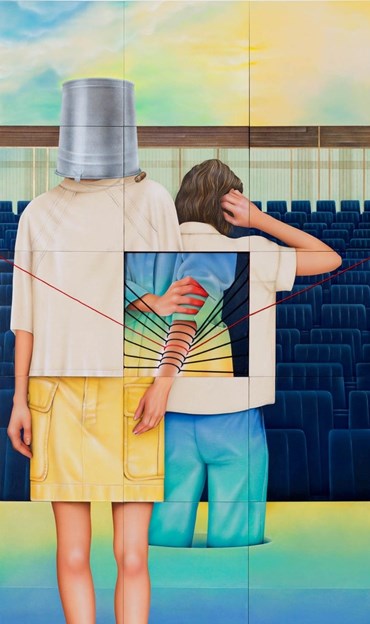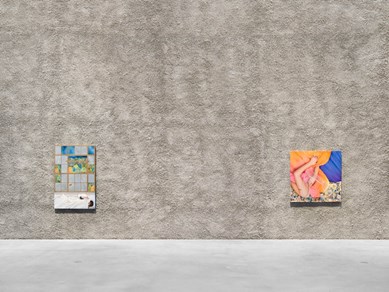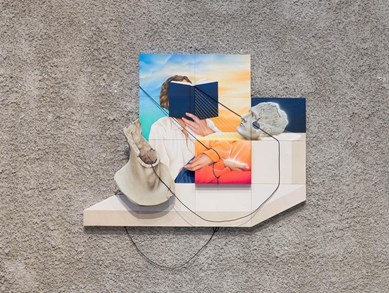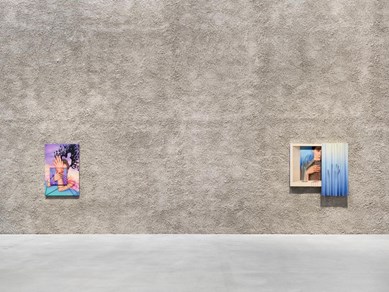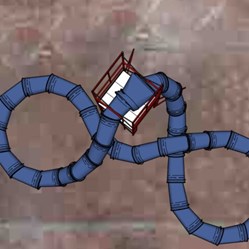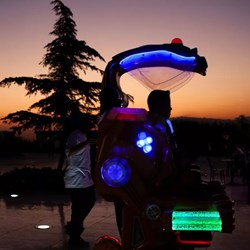14 Jan - 20 Feb, 2022

KÖNIG GALERIE presents Arghavan Khosravi’s first solo exhibition in Germany. TRUTH BE TOLD comprises a group of 11 new mixed-media paintings in which the Iranian artist treats the suppression of women in authoritarian regimes or patriarchal societies. Khosravi’s figurative works are charged with symbolic meaning and, through the juxtaposition of contrasting pictorial elements or layers that can be two- or three-dimensional, they are unsettlingly enigmatic at the same time.///
Most of the female figures that are depicted in Khosravi’s works are prevented from moving freely. They often seem trapped in a nightmare in which they are unable to run away: their legs are stuck in the concrete floor or deep holes; their wrists and arms are tied; their voice suffocates under water or in a bucket covering their head. One woman disappears behind drawn curtains, others seem to have burnt their fingers on something they were not allowed to touch.
At the core of the exhibition is THE BATTLE, a work that Khosravi built from several massive wooden panels, and which is the most complex work within the group. Its triptych composition is reminiscent of a medieval altar piece. This quality is combined with imagery based on Persian miniature painting: a battle scene moving from the outer right and left edges of the largest, horizontal panel to the center. The central, vertical panel shows the body of a woman, who is wearing an elegant blouse.
An element shared by all works in the exhibition are red or black lines used by Khosravi as an abstraction of shackles or ties. They can be executed painterly, but also appear in the form of strings, cords, and other material that she integrates into her paintings. In the place where the woman's head would be, Khosravi leaves a gap that reveals black cords connecting the woman to the soldiers on both sides of the picture. Rather than relating to an actual war, the battle scenes in Khosravi’s works stand for the battles that women must fight to free themselves from rules and restrictions imposed on them by patriarchy.
Whenever Khosravi includes golden lines in her works, they may be seen as a sign of hope—similarly to religious art, in which golden rays denote a holy person. A set of golden strings connects the woman in the picture with the antique female bust in the foreground of the work, emphasizing the three-dimensional, sculptural component of the work. Ancient sculptures in Khosravi’s work reference the past—in this case, the centuries-old history of women's suppression. In her hand, the woman seems to hold the source of the golden light shining brightly, spreading hope for other women that rise up against their oppressors.
Education can be a means of freeing oneself from restrictions and dependence. THE READING shows a woman holding a book. Light is shining through cracks in a burst bust of a Roman Emperor, a fallen patriarch that now looks like a leftover from the past.
Khosravi's surrealistic works live from the juxtaposition of contrasting visual worlds. In them, the artist expresses her experiences with female oppression, the opposition of different cultures, displacement, and the struggle between tradition and modernity. In THE STAGE, the interior of a theater meets the open sky. The two female figures on stage are subjected to a grid, as the picture plane is constructed from individual panels. The shackles on the young woman's wrist allude to censorship and repression: “Living in Iran there are always a lot of red lines. You have to be careful,” Khosravi says. When depicting dark scenes like this one, Khosravi at times aims to add a comic twist. The voice of the woman in the picture is ironically cut off by a bucket above her head anyhow.
Religion is often misused as an excuse for oppression in authoritarian societies. In THE MIRAJ, Khosravi alludes to an iconic Islamic belief, linked to the Ascension of Muhammad. The scene was often depicted in Persian miniature painting and usually shows the body of the saint surrounded by flames. In her adaptation, Khosravi colors these flames in black and makes an empty silhouette appear in the prophet’s place.
Arghavan Khosravi paints women of her generation who have similar experiences as she did while growing up in Iran. Instead of entirely victimizing them, she shows strong women fighting for their rights and improving their situation. By combining imagery stemming from different cultural and historical backgrounds, the artist succeeds at transcending her personal experience to obtain universal significance.
Read More: Arghavan Khosravi to Join König Galerie





